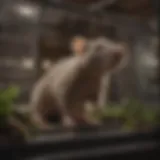Identifying Bed Bug Look-Alikes: A Detailed Examination
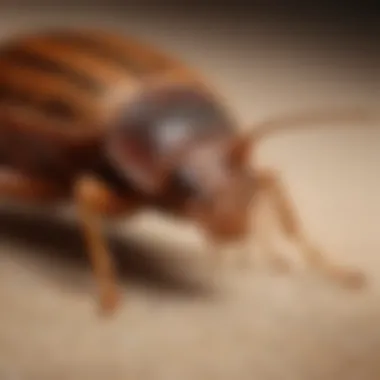

Intro
Identifying insects that resemble bed bugs is crucial for effective pest management. Bed bugs, scientifically known as Cimex lectularius, are notorious for their ability to cause discomfort and distress to humans. However, they are not the only insects that share physical characteristics with them. Understanding how to differentiate bed bugs from their look-alikes can help in identifying infestations accurately and implementing the right control measures.
This article will delve into several insects that mimic bed bugs, including bat bugs and fleas. By shedding light on their identification features, ecological roles, and behavioral traits, readers can gain the knowledge necessary to respond appropriately in various situations. This discussion will be particularly useful for homeowners, pet owners, and wildlife enthusiasts who may encounter these insects.
Animal Species Profile
Preface to the animal species
The insects discussed in this article may share similarities with bed bugs, but they belong to different species. For instance, bat bugs are closely related to bed bugs and often inhabit environments where bats are present. Fleas, on the other hand, are external parasites that affect mainly cats and dogs but can also bite humans.
Physical characteristics and appearance
Bed bugs are typically small, about 4-5 mm long, and have a reddish-brown color. Bat bugs have a similar shape and size but can be differentiated by the length of their hairs on the body. These hairs are shorter on bat bugs than they are on bed bugs.
Fleas are much smaller and usually less than 3 mm long and are known for their agile jumping ability. They have a flattened body and are dark brown, often appearing almost black.
Natural habitat and distribution
Bed bugs are found in human dwellings, while bat bugs prefer to live in areas where bats roost. This includes attics and wooded areas. Fleas thrive in homes with pets, particularly in bedding or areas where animals frequently rest.
Behavior and social interactions
Bed bugs are mainly nocturnal, feeding on human blood at night while hiding during the day. Bat bugs exhibit similar feeding habits but are often found in colonies near their hosts. Fleas jump from host to host, taking quick bites to feed on blood.
Conservation & Wildlife Efforts
Although bed bugs and their look-alikes are not typically endangered, awareness about their behaviors and impacts is necessary for effective management. Pest control practices should be encouraged to prevent infestations, ensuring that these species do not disrupt human activities or habitats.
Unique Facts & Trivia
- Bat bugs are often confused with bed bugs but are specifically adapted to live in areas with bat populations.
- Fleas can jump over 150 times their own height, demonstrating remarkable agility.
Understanding the differences between these insects can empower homeowners and pet owners to take appropriate actions in managing potential infestations.
Pet Care & Tips
Knowledge about insects is essential for pet care. Fleas can easily infest pets, so it is important to keep regular check-ups. Here are some care tips:
- Regularly groom pets to remove fleas prior to infestations.
- Use veterinary-approved flea preventatives to keep pets healthy.
- Maintain cleanliness in the home by vacuuming areas where pets spend time.
This comprehensive look at bed bug look-alikes invites further exploration of these insects and encourages responsible management approaches in dealing with potential infestations.
Prelims to Bed Bugs
Understanding bed bugs is essential for anyone looking to maintain a healthy environment. These pests not only disrupt peace but also pose significant challenges in terms of eradication. Their presence can lead to sleepless nights and stress, particularly for homeowners and tenants. In this article, we will dive deep into the characteristics of bed bugs and their behaviors, setting the stage for identifying their look-alikes.
Overview of Bed Bug Characteristics
Bed bugs, scientifically known as Cimex lectularius, are small, parasitic insects that primarily feed on human blood. They typically have a flat, oval shape and are brown in color, which enables them to blend into their surroundings. An adult bed bug measures about 4 to 5 millimeters in length and possesses a characteristic reddish tint after feeding. Their bodies are segmented, giving them a somewhat ridged appearance, which can sometimes be confused with other insects.
Bed bugs are notorious for their stealthy nature. They are mostly nocturnal, relying on their keen sense of smell to locate hosts. This makes it difficult to identify them during the day when they tend to hide in cracks and crevices, specifically in beds, furniture, and walls. Note also that their life cycle includes several stages, from eggs to nymphs, and then adult bugs, each requiring specific conditions to thrive.
Habitat and Behavior
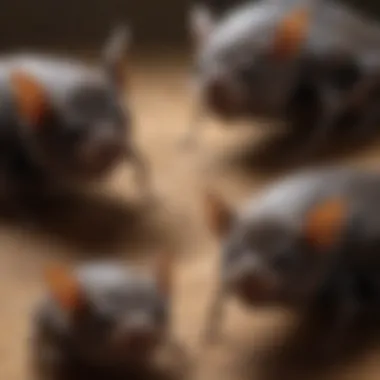

The habitat of bed bugs is primarily linked to human dwellings. They prefer environments where people sleep, such as hotels, dormitories, and homes. In addition to bedding, they can be found in personal belongings, such as suitcases and clothes. A significant aspect of their behavior is their ability to quickly reproduce. A female bed bug can lay up to 300 eggs in her lifetime, resulting in rapid population growth.
In terms of behavior, these pests are known to travel long distances in search of hosts. They are not limited to specific locations and can spread through social environments. Their refusal to be particular about hosts contributes to their persistence and makes control efforts more difficult. Being informed about bed bugs and their characteristics is crucial for anyone seeking effective pest management strategies.
Common Insects That Resemble Bed Bugs
Understanding the common insects that look like bed bugs is crucial for effective pest management and prevention. Mistaken identity can lead to inappropriate treatments, resulting in inadequate control measures. Recognizing these look-alikes not only saves time and effort but also ensures that correct pest identification leads to appropriate management strategies. This section focuses on several species that share similarities with bed bugs, outlining their defining characteristics and behaviors.
Bat Bugs
Physical Identification
Bat bugs, while similar in appearance to bed bugs, possess unique physical characteristics that can aid in identification. They are generally longer and possess a more extended body shape, which distinguishes them from their notorious counterparts. Their coloration also tends to darken with age. Recognizing these subtle differences can drastically improve identification accuracy, proving beneficial for pest management. For instance, the presence of fine hair along the edges of their bodies is a notable feature that often goes unnoticed.
Behavioral Differences
Bat bugs exhibit distinct behavioral traits compared to bed bugs. Primarily, they are more dependent on bat colonies for survival. This unique dependence suggests they will typically inhabit areas close to such roosts. Deep understanding of their behavior aids in predicting their movement patterns and potential risk of infestation in residential settings. This knowledge proves useful for targeted pest control strategies.
Fleas
Signs of Infestation
Identifying signs of infestation is crucial for managing flea populations. Common indicators include the presence of flea feces, which appears as tiny black specks on the skin of pets. This element is particularly significant because early detection allows for prompt treatment before the population expands. The presence of frequent scratching by pets can also hint at a flea problem, signaling the need for intervention.
Life Cycle
Fleas have a complex life cycle consisting of eggs, larvae, pupae, and adults. Each stage presents its challenges for control. Understanding their life cycle helps in implementing effective strategies to break the cycle, allowing for thorough eradication. For example, treating only adult fleas may not suffice if eggs and larvae are allowed to remain undetected.
Carpet Beetles
Physical Features
Carpet beetles possess a rounded body and are often confused with bed bugs due to their similar sizes. Their distinctive patterns vary between species, which can often lead to misidentification. Highlighting these physical traits improves awareness. It lets individuals differentiate between pests effectively, ensuring proper management methods are employed.
Habitat Preferences
These beetles prefer habitats rich in natural fibers. They thrive in carpets, upholstery, and clothing materials. Recognizing these preferences not only aids in identification but also helps in pinpointing high-risk areas for infestations. Homeowners can then implement preventive measures in susceptible spaces.
Spider Beetles
Appearance
Spider beetles have an elongated body and a shiny, smooth surface, which may lead to confusion with bed bugs. Their distinctive appearance, marked by a unique coloration depending on the species, makes proper identification important. The ability to spot a spider beetle among other similar species allows for effective pest control actions. Their shape, including a noticeable oval form, signifies an individual species needing separate management treatment.
Behavioral Traits
Unlike bed bugs, spider beetles often exhibit scavenging behavior. They feed primarily on organic matter, including dried food products. Understanding this behavior can lead to better prevention methods, as it highlights the importance of maintaining cleanliness in food storage areas to deter infestations.
Tarnished Plant Bugs
Identification Criteria
Identification of tarnished plant bugs can be tricky given their resemblance to bed bugs. Key features include a distinctive yellow-green color and a unique triangular shape. Their identification process is beneficial, as it informs individuals on how to appropriately manage potential infestations without mistaking them for bed bugs.
Ecological Role
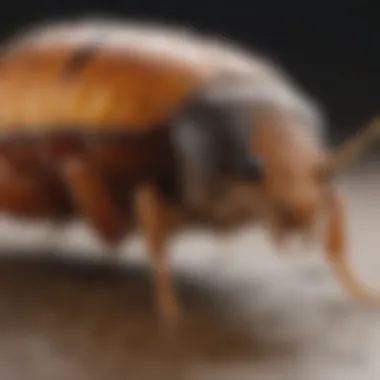

These bugs play a pivotal role in the ecosystem, often aiding in pollination. Their ecological significance should not be overlooked. Despite being pests sometimes, they contribute to garden health, making awareness of their presence in gardens crucial for balance reproduction and pest control.
Other Look-Alike Insects
Assessment of Similarities
An assessment of various insects resembling bed bugs can help foster better identification skills. This includes taking into account size, shape, and feeding habits. Noting these similarities enables individuals to respond accurately in case of a potential infestation, contributing significantly to effective pest management strategies.
Regional Variations
Lastly, regional variations in look-alike insects contribute to identification challenges. Different areas may host distinct species that bear similarities to bed bugs, adjusting management techniques accordingly. Knowing these variations further enhances understanding of pest behavior and habitat preferences, underscoring the need for a tailored approach depending on the region.
Distinguishing Features of Bed Bug Look-Alikes
Understanding the distinguishing features of insects that resemble bed bugs is crucial for effective pest management. This knowledge helps in preventing misidentifications, which can lead to ineffective control measures and heightened infestations. Accurate recognition of these insects allows homeowners, pest control professionals, and wildlife enthusiasts to devise appropriate strategies for addressing actual bed bug problems while avoiding unnecessary actions against benign look-alikes.
Color and Size Comparisons
Color and size are primary factors in identifying look-alikes. Bed bugs typically present a reddish-brown color, while their size ranges from approximately 4 to 5 mm in length. Insects such as bat bugs share a similar color but can have a slightly elongated body, measuring about the same or less than a bed bug. Meanwhile, fleas tend to be darker and smaller, often around 1 to 3 mm in size, making them easily distinguishable.
When comparing color:
- Bed Bugs: Reddish-brown, flat, and oval-shaped.
- Bat Bugs: Similar coloration but may look more elongated due to their shape.
- Fleas: A dark color that distinguishes them from bed bugs and bat bugs.
Some carpet beetles might show patterns in their coloration which can distract from identifying them as bed bug substitutes. Therefore, careful observation is key.
Shape and Body Structure
The shape and body structure of bed bugs set them apart from other pests. Bed bugs have a distinctive flat and oval shape, allowing them to hide in tiny crevices. Bat bugs maintain a similar form but tend to have more prominent hair on their bodies, which influences appearance.
Here are noteworthy distinctions:
- Bed Bugs: Flat, oval, and possess a rounded abdomen.
- Bat Bugs: Elongated with visible hair on the body, slightly larger in size.
- Spider Beetles: These may resemble bed bugs in shape but are much smaller and exhibit a more rounded thorax.
- Carpet Beetles: Typically rounder and less flat compared to bed bugs, with distinct patterns of color.
Recognizing the specific shape and body characteristics can streamline the identification process significantly.
Feeding Habits and Patterns
The feeding habits of these insects also provide significant clues to their identiy. Bed bugs are hematophagous, feeding exclusively on blood. In contrast, fleas also consume blood, yet their behavior involves quick jumps away from their hosts after feeding. This results in clear differences in reactions and behaviors when approached or handled.
Consider the following feeding behaviors:
- Bed Bugs: Prefer nocturnal feeding, often leaving red, itchy welts on the host.
- Fleas: Jump quickly and may feed on fur in the case of pets, typically leaving multiple bites.
- Tarnished Plant Bugs: They feed on plants, not blood, and can be found on various vegetation, indicating a completely different feeding pattern.
Identifying these habits can provide immediate context to potential infestations. Misinterpreting or overlooking such distinctive features might lead to broader ecological consequences, affecting pest management practices and public health strategies.
Ecological Implications of Bug Misidentification
Misidentification of bed bugs and their look-alikes can lead to significant ecological implications. It is essential to recognize the correct insects not only for effective pest control but also to understand the broader effects on public health and the environment. Each species interacts with its ecosystem in unique ways. When those characteristics are overlooked, it can result in ineffective or even harmful pest control strategies.
When one mistakenly identifies insects such as fleas, bat bugs, or carpet beetles as bed bugs, the response to these pests can be misguided. This can lead to attempted control measures that do not address the actual problem, possibly allowing the real pests to thrive. It also creates unnecessary use of pesticides, which can have negative effects on non-target species and the environment.
Furthermore, ecological balance can be disrupted. Some insects play important roles in their ecosystems. For instance, certain beetles contribute to nutrient cycling, while others may control populations of less desirable insects. Understanding the ecological context of these species is crucial for maintaining biodiversity, which can be disrupted by excessive or improper pest management tactics.
In sum, accurate identification is critical to executing effective pest control while preserving ecological integrity and public health. It fosters a deeper appreciation for the complexities of ecosystems and the necessity of maintaining them.
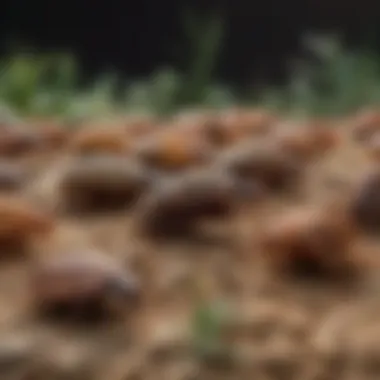

Preventive Measures and Management Strategies
Preventive measures and management strategies are crucial when dealing with insect infestations, particularly bed bugs and their look-alikes. Understanding how to effectively prevent infestations helps homeowners and pet owners protect their environments, maintaining health and safety. Proactive strategies not only minimize the risks associated with these pests but also diminish the likelihood of future infestations.
Inspection Techniques
Regular inspections play a vital role in early detection of bed bugs and other similar insects. Observing specific areas where these pests commonly reside is essential. Common locations for inspections include:
- Mattresses and Box Springs: Check seams, folds, and creases for eggs or dark spots.
- Furniture: Inspect chairs, sofas, and any upholstered furnishings where bugs may hide.
- Baseboards and Carpets: Look closely around edges and corners. Loosely laid carpets can also harbor pests.
Utilizing a flashlight can enhance visibility when searching for small pests. It can also be helpful to use a magnifying glass for inspecting smaller insects. Keeping a detailed record of inspections assists in recognizing patterns or areas that frequently need pest management.
Treatment Options
Therapeutic measures for pest control generally categorize into natural remedies and professional pest control services.
Natural Remedies
Natural remedies provide an effective and environmentally friendly way to address pest issues. Common natural solutions include:
- Diatomaceous Earth: This powdery substance disrupts the exoskeleton of pests, leading to dehydration. It is highly regarded for its effectiveness.
- Essential Oils: Oils like lavender, tea tree, and peppermint can repel pests due to their strong scents. They have gained popularity among those seeking chemical-free options.
The unique characteristic of natural remedies is their lower toxicity, making them safer for households with pets and children. However, effectiveness can vary, and these treatments may require repeated applications to yield satisfactory results. Natural remedies also take longer to show results compared to chemical treatments.
Professional Pest Control
Professional pest control offers specialized knowledge and tools to address insect infestations effectively. Experts in this field can accurately identify insect species and deploy targeted treatments. It's a beneficial choice for severe infestations or if previous attempts at control have failed.
A key characteristic of professional services is their customized approach. Each infestation may present its unique challenges, and professionals tailor their strategies accordingly. They often use a combination of chemical and non-chemical methods, ensuring a comprehensive approach. However, the cost can be high, and not all treatments are environmentally friendly, making it important to evaluate the long-term implications.
Key Insight: Employing both preventive measures, like regular inspections, and treatment options, such as natural remedies or professional help, creates a robust strategy to manage insect infestations.
Culmination
Understanding the distinctions between bed bugs and their look-alikes is not merely an academic exercise; it has real-world implications. This article has shed light on the complexities involved in identifying insects that might cause confusion, such as bat bugs, fleas, and other similar pests. Proper identification is crucial in effectively managing infestations and ensuring suitable control measures are enacted. Misidentification could lead to inappropriate treatment strategies, resulting in the perpetuation of the problem rather than its resolution.
For pet owners and homeowners, recognizing these insect traits fosters a proactive attitude towards pest management. Being informed about their behaviors and habitats can aid in preventing future infestations. Awareness is a significant component in maintaining a healthy environment for both humans and pets alike. Furthermore, understanding these insects can enhance educational efforts for people interested in wildlife and entomology.
Summary of Key Takeaways
- Importance of Accurate Identification: Accurate identification of bed bugs and similar insects prevents ineffective pest control methods.
- Impact on Public Health: Misidentifying pests can lead to health risks, particularly if a true bed bug infestation occurs.
- Behavioral Insights: Knowledge of behaviors unique to bed bugs and their look-alikes fosters informed decision-making regarding treatment and prevention.
- Proactive Measures: Regular inspections and awareness of potential threats can help mitigate infestations before they become significant.
In summary, this examination encourages vigilance and education among readers, equipping them with the tools needed to tackle insect issues effectively. The nuances in the world of entomology require attention to detail and understanding, and by focusing on these aspects, one can contribute to a healthier living space.
Further Reading and Resources
Understanding insects that resemble bed bugs is crucial for effective identification and management. For readers seeking to broaden their knowledge, further reading materials are invaluable. They provide insights into species characteristics, natural behaviors, and management strategies. Books and online resources allow readers to deepen their understanding and stay updated on pest control methods. Furthermore, these resources can serve as references for more specialized inquiries.
Books on Insect Identification
Books on insect identification play a vital role for anyone interested in entomology or pest management. They offer detailed descriptions and photographs that aid in recognizing various species. Some recommended titles include:
- "Field Guide to the Bed Bugs of the Eastern United States": This book provides a thorough exploration of bed bugs and their look-alikes, with images and comparisons.
- "Insects of the Northwest": A comprehensive guide that covers a variety of insects, including pests similar to bed bugs.
- "The Encyclopedia of Entomology": It contains in-depth entries on insect biology and classification, valuable to professionals and enthusiasts alike.
These sources emphasize key physical traits, behaviors, and habitats necessary for accurate identification. Further study encourages critical thinking about insect interactions within ecosystems.
Online Resources and Databases
The internet abounds with online resources and databases that can enhance one's knowledge about insect identification. These platforms provide access to articles, databases, and community forums. Notable online resources include:
- Wikipedia (en.wikipedia.org): Offers a general overview of various insects and includes links to more detailed studies.
- Britannica (britannica.com): Provides articles that consolidate reliable information on insect characteristics and biology.
- Reddit (reddit.com) forums: Where enthusiasts and experts exchange advice, experiences, and tips on insect management.
- Facebook (facebook.com) groups: Dedicated to pest control discussions, offering insights from real-life cases.
These resources are essential for all aspects of pest management. They keep individuals informed on emerging trends and research developments regarding look-alike insects. Engaging with the broader community fosters collaborative learning while promoting awareness about pest identification.
